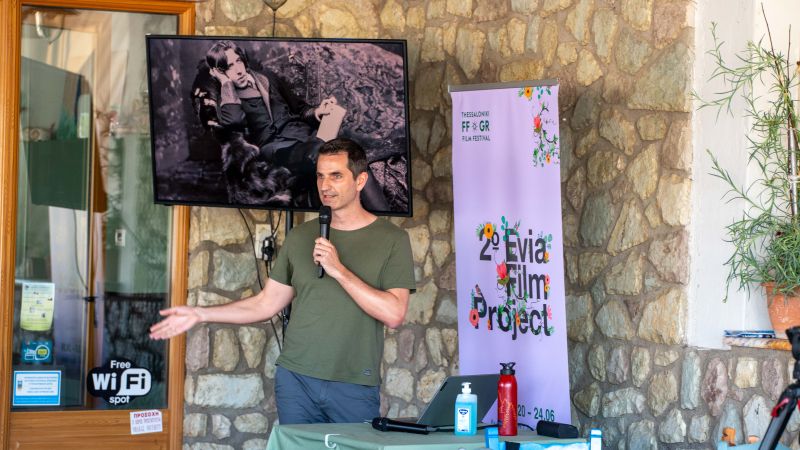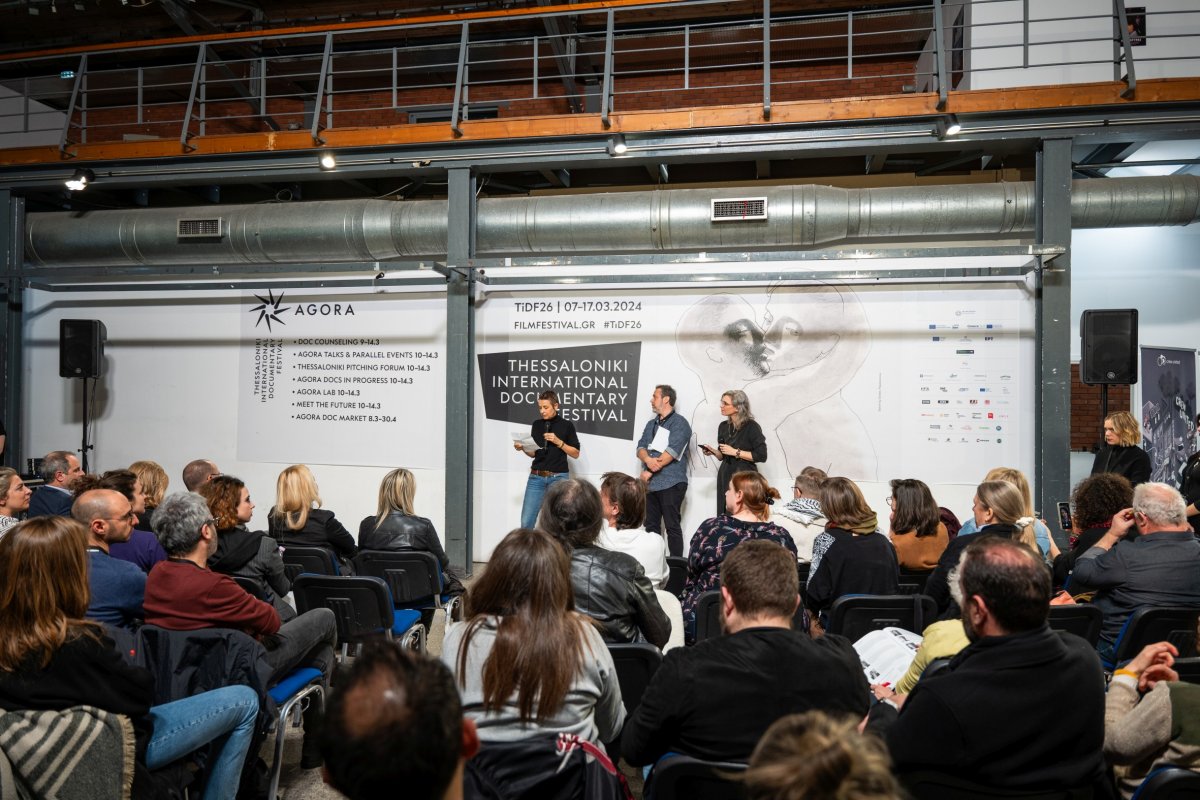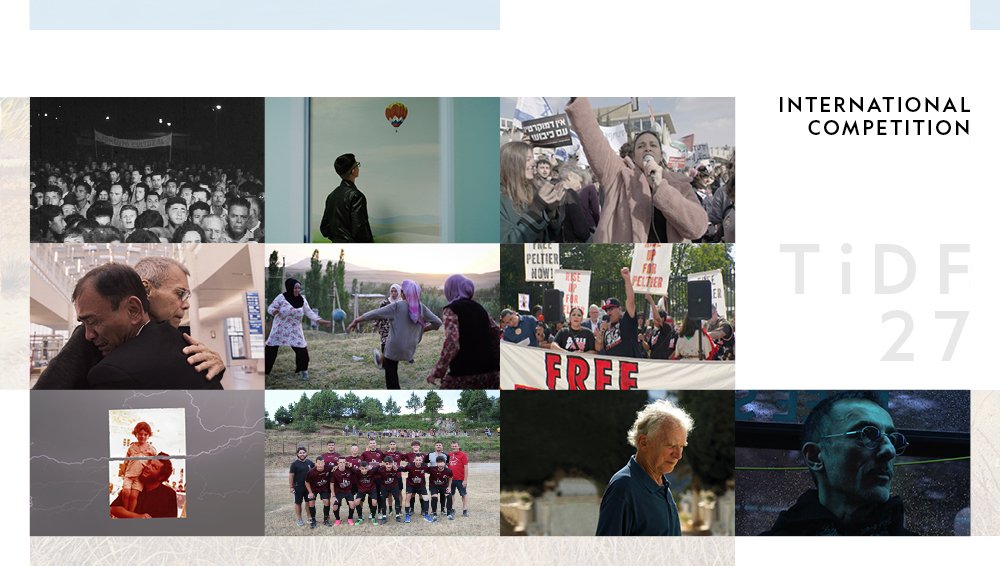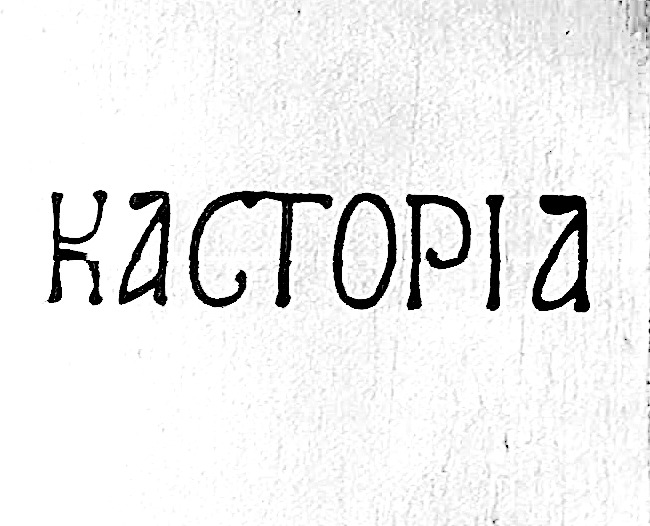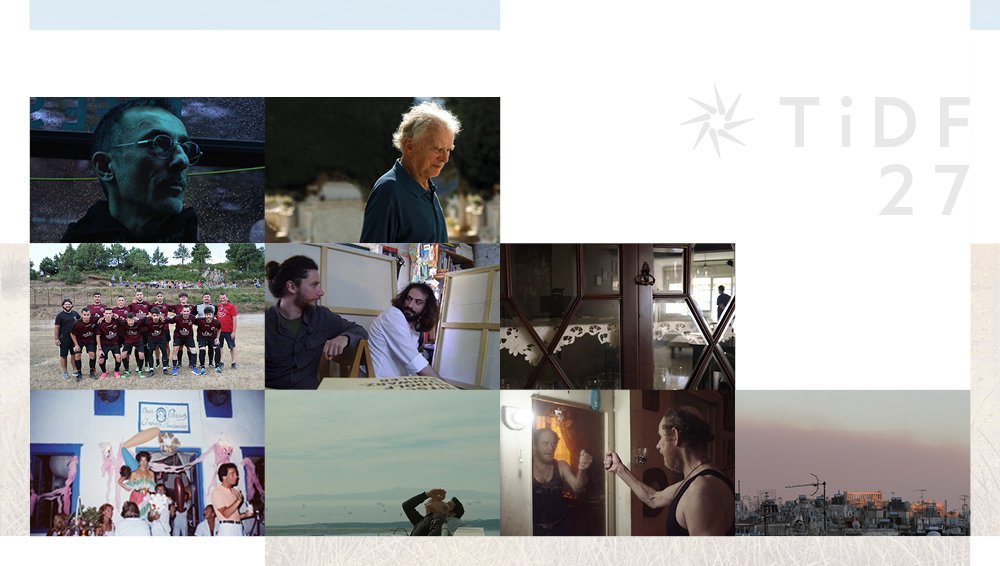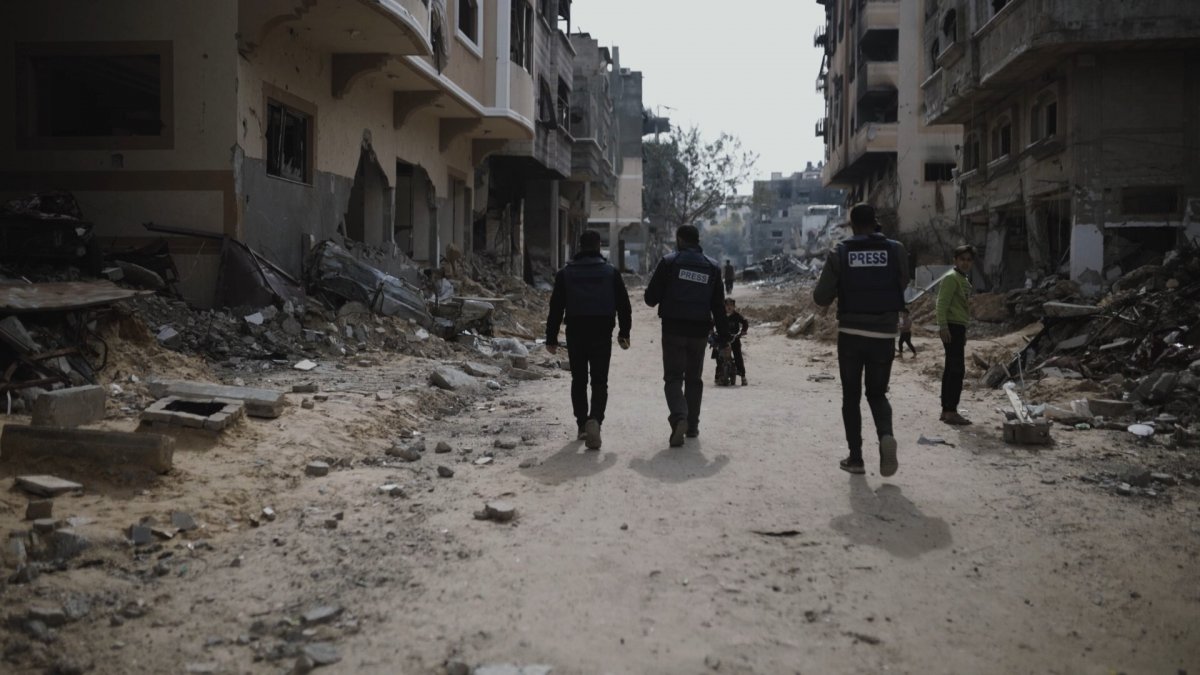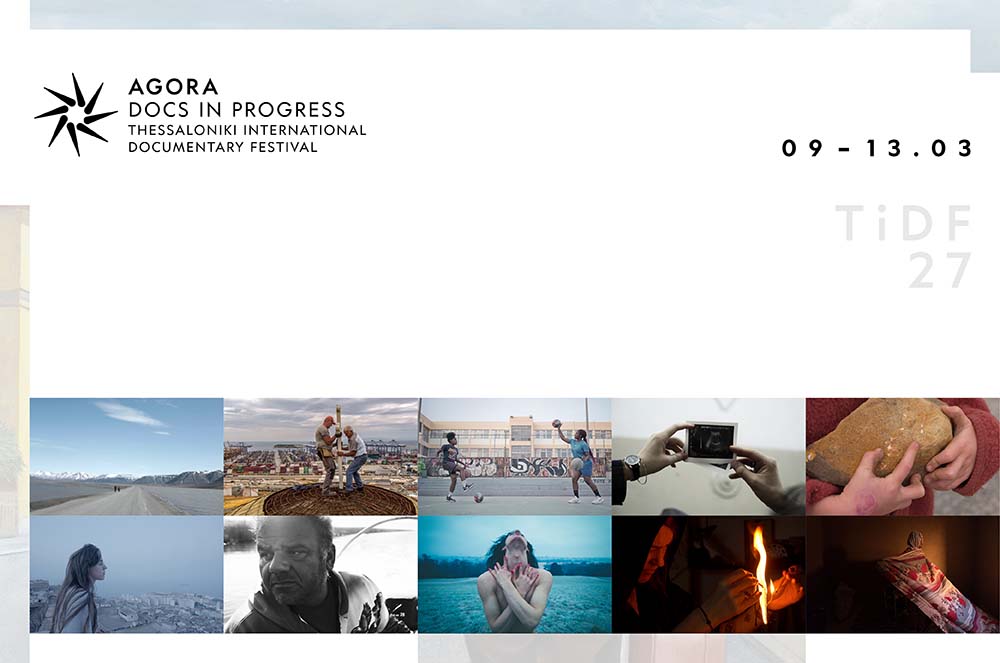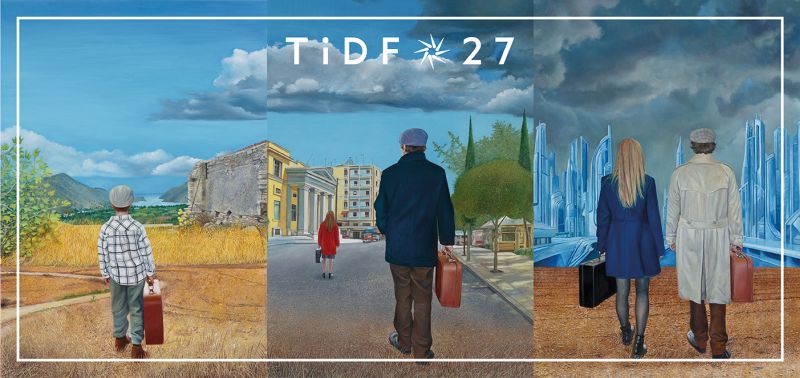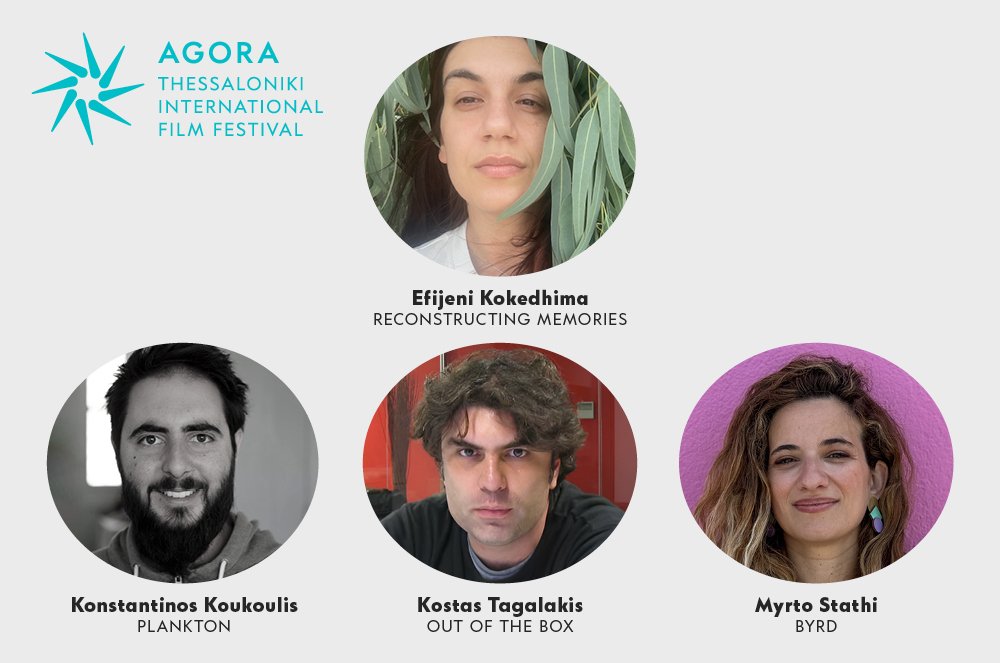Within the framework of the 2nd Evia Film Project, filmmaker, writer, and screenwriter Zacharias Mavroeidis, director of the critically acclaimed films The Guide and Defunct, delivered a masterclass on Thursday, June 22nd, in Agia Anna, titled "Narratology Mon Amour", unlocking the secrets of narratology, the concept of cinematic "text" and its three forms: narrative, oration, and description.
The masterclass was prefaced by Eleftheria Thanouli, Professor of Film Theory at the Aristotle University of Thessaloniki and President of the Board of Directors of the Thessaloniki Film Festival. "I am delighted that you are here, and I am delighted that this masterclass is conducted by Zacharias Mavroeidis, whom we have known since he was a student. Since then, he has been a creative and restless spirit," noted Ms. Thanouli, before giving the floor to Mr. Mavroeidis.
Starting off, Mr. Mavroeidis noted that he is delivering this masterclass primarily in his capacity as a screenwriting professor. "When I started teaching screenwriting about ten years ago, I faced the following paradox: the students, kids your age, had to do exercises such as a short film, a commercial, a music video," he mentioned at first. In search of what to teach them, he wondered what knowledge would be useful for these kids. "The most reasonable source was the theory of screenplay, a relatively recent field of knowledge, dating back to the 1970s and beyond," he added. Screenplay theory emerged from the Hollywood industry, aiming to provide the appropriate tools for screenwriters to structure their scripts, as well as the tools for producers to evaluate those scripts. He also mentioned that most books focus on how to write a screenplay with a central protagonist and a linear narrative, but they don't delve into the importance of visual vocabulary for storytelling: editing, cinematography, framing. Additionally, they don't address short films, documentaries, or advertising.
"While searching for alternative sources of knowledge, I delved into the murky waters of narratology, which is a different field of knowledge, a science that studies the structure and nature of narration and how it is perceived by the recipient," he stated. Mr. Mavroeidis emphasized the paradox that screenplay theory completely disregards the audiovisual language, while narratology pays no attention to the screenplay itself. However, he also noted that both fields pay tribute to Aristotle's Poetics. "The knowledge that exists in narratology is a tool for creating better films, better music videos, and for understanding what we do," he remarked.
Mr. Mavroeidis then discussed what text is for narratology, using the definition provided by author Seymour Chatman: "Text is any medium of communication that temporally controls its process of perception by the audience. It has a given beginning and duration, as well as a given ending." He also added that every narrative art form constructs its texts with its own language. Referring to cinema, he mentioned that it has at its disposal editing, sounds, music, and actors' performances. All of these constitute the audiovisual language. According to Chatman, he said, there are three categories of texts: narration, oration, and description. The first category refers to any text that tells a story with a beginning, middle, and end. The second category includes texts that present an opinion and description, texts that describe an image, a landscape, or a personality. The fundamental difference between narration and the other categories is that narration involves the flow of time. Texts may belong to one of these three categories, but often these categories coexist. He emphasized that how we prioritize texts is an interpretation of the creator's intentions. This is sometimes clear and sometimes not so clear. He added that our experiences or the historical period in which we read a book or watch a film determines which of the three texts we consider dominant.
Referring to cinema, he said that every shot has a duration, so even if nothing is happening, it is still a short narration. When watching a film, we seek a coherent message, which in a way constitutes an oration on a subject, he stated, noting that films unintentionally reflect messages. As for description, he considers it the most "insidious" type of text in cinema. This is because, as he pointed out, in cinema, an image is worth a thousand words, and a shot is worth a million words. Cinema, by its very nature, is inherently descriptive, and there is action happening simultaneously with the description. The acclaimed director and screenwriter explained that often the three texts constantly overlap, and which one dominates depends on the interpretation of the filmmaker's intentions.
He went on to say that narration spans a spectrum, where on one end it can be somewhat sleight of hand, with many creators aiming to present a gag or a bluff. On the other end of the spectrum, narration seeks to talk to us about change and looks for causality. He noted that this is also the noble aim of narration, to explain our world with causality, to show us, for example, how the moral becomes immoral, or how the rich become poor, and so on.
He then referred to oration, stating that dominant films in this category are primarily propaganda films that aim to support a specific ideological position. He added that one parameter is whether they are polyphonic, dialogic, or monologic. Another parameter is whether they lead to a conclusion or leave the audience to draw their own conclusions. He even made a specific reference to renowned creators such as Buñuel and Pasolini, who are characterized by dominant oration. He clarified that he considers all three types of texts equally good, stating that they can lead to equally good or bad films.
Moving on to description, he noted that it is the quintessence of audiovisual storytelling. Talking about the origins of cinema, he said that the audience's goal was to enjoy the unparalleled realism of cinema. Every time the audiovisual language utilized a new tool, the production was quick to appropriate it. He added that there are genres where the dominant intention is description (for example disaster films, pornography, etc). Next, he mentioned the three dimensions of descriptive text: the literal dimension, the visual imagery, and the abstract level. He stated that cinema can describe abstract concepts, and advertising heavily utilizes this ability. He added that description seeks inherent contradictions, doing the opposite of what narration does, which seeks causality. Observational documentaries often emphasize the abstract dimension of description.
Concluding the masterclass, he mentioned that every individual has a tendency to hierarchize texts. "The reason I believe it is valuable for every creator to reflect on the hierarchy is because I think there are a number of choices related to the dominant intention," he stated. In response to a question about what the dominant intention is in his film Defunct he noted that in his opinion, narration slightly dominates. At the same time, he emphasized that the film touches on the theme of masculinity and heroism, which, although seems like oration, is handled in a descriptive manner. "Providing an answer to how texts are hierarchized does not mean that it can’t be changed the next day," he added. When asked if these rules also apply to short films, he said that to some extent they do, but precisely because of their duration, short films allow for greater freedom. He concluded by pointing out that the first step for a director if he or she embraces one of these models, is to start applying it.
Evia Film Project is the Festival’s third pillar of activities, following the International Thessaloniki Film Festival, held in November, and the Thessaloniki Documentary Festival, held in March. Its goal is to consolidate Northern Evia, a region severely hit by the 2021 calamitous wildfires, as an international hub of green cinema. Evia Film Project is actualized with the support of the Hellenic Ministry of Culture and Sports, within the framework of the Reconstruction Plan for Northern Evia, in collaboration with the Region of Central Greece, the Greek Film Centre, the Municipality of Istiea-Edipsos, and the Municipality of Mantoudi-Limni-Agia Anna. The Thessaloniki Film Festival collaborates with the production institutions that are based in Evia and the Department of Digital Arts and Cinema of the National and Kapodistrian University of Athens in Psachna.


